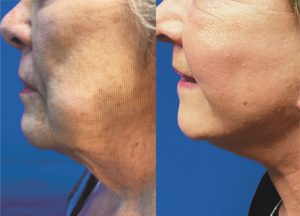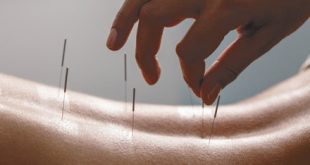By Gunnar Bergqvist, MD


Deep Plane Full Face Lift, is the most common facelift with long-term effects, which involves tightening the deeper structures. Its also known as SMAS, which stands for submuscular aponeurosis system. This is performed on the deeper tougher tissues which retain the deep structures of soft tissue within your face. Anticipated recovery: 2 weeks of sutures and swelling, (can be longer). There are incisions for this surgery around the ear, extending into the hairline posteriorly, and a small incision under the chin. A compression garment is necessary to wear for a total of 1 month. Initially, all the time for the first two weeks, then, reduced night time wear. Generally, your friends and family will be quite aware that you had a surgical intervention.
Limited surgical face lifts, like the Thread Lift tightens the lower face and cheek area by inserting threads with small hooks them. Often used on lesser sagging and these do not last as long.
Ponytail Lift requires a cut above ear in hair line. A small amount of skin and deep structures are lifted at the midface.
Renuvion/J Plasma is a newer modality that was just cleared by the FDA for face and neck tightening. This procedure uses a small canula that is inserted under the skin. A helium plasma beam delivers energy to the tissue thereby generating collagen creation and skin tightening. There are no incision, but a small puncture. This procedure has shown to have great results and is state of the art in technology. The benefit of this compared to facelift is reduced downtime and no true incisions. Results are great but not immediate, about 3-5 months.
Other less invasive modalities include stimulation to the skin by means of either needles, ultrasound or chemicals which can improve the appearance of the face.
A well-known noninvasive facelift is Ultheraphy which is focused ultrasound energy that creates microwave injuries at multiple levels of the skin and deeper tissue, thereby creating tightening over the next 3-6 months. This can be very good option for some candidates and requires no downtime.
Often to get the best results, Dr. B may have to restore some volume in the face which may involve injectables such as hyaluronic acid or taking some fat from the patient itself and fat grafting.
All procedures can be done with or without anesthesia. The benefits for having no anesthesia would be reduced bruising, nausea and increased privacy. Nausea and vomiting after anesthesia cause pressure and may create much more swelling and bruising. Under the experience and skill of double boarded Plastic & Reconstructive Surgeon, Dr. Gunnar Bergqvist, MD, any of the facelift procedures may be done in-office, using the Tumescent Lidocaine Delivery, offering more privacy. However, Dr. & patient may choose to use anesthesia in the surgery center. It’s important these procedures are only to be performed by a board-certified Plastic Surgeon. They should have training in Tumescent surgery in addition to a Certificate proving they are Boarded by the American Board of Plastic Surgeons, ASPS.
Ask your doctor how many facelifts they have done, where and how long they trained. No one should be delivering cosmetic procedures if they have completed residency training in another field or doing procedures if they are for example, an Internal Medicine Doctor who has gone to weekend courses for cosmetic clinical applications. Beware of “Physicians” who go to medical school and skip any residency. It’s not safe or cheaper! In fact, DR. Bergqvist sees the damage done by many patients from undertrained “aesthetic” clinicians. Just because someone with less training offers a less invasive treatment, does not mean it’s the correct one. Why not go to the right surgeon who offers ALL the options with the best advice possible for the specific results you are looking for?
Dr. Bergqvist is double boarded by the American Board of Plastic & Reconstructive Surgery as well as the American Board of Surgery and a member of the American Society of Plastic Surgeons which hold the Highest standard of care in the field. In 2019 Dr. Bergqvist and Dr. Jeffery Klein, (the inventor of Tumescent Anesthesia), showed new results with an even more advanced formula called TLAD, (Tumescent Lidocaine Antibiotic Delivery,) which further reduces pain and discomfort after even more invasive surgeries that can be used for all types of surgeries. This solution has allowed Dr. Bergqvist to expand its use for many other procedures allowing many procedures to be done directly in his office.
The Plastic Surgery Center of Naples
860 111th Ave., N., Suite #6, Naples Florida, 34108
239.431.7967 | www.SwedishDr.com
 Southwest Florida's Health and Wellness Magazine Health and Wellness Articles
Southwest Florida's Health and Wellness Magazine Health and Wellness Articles

